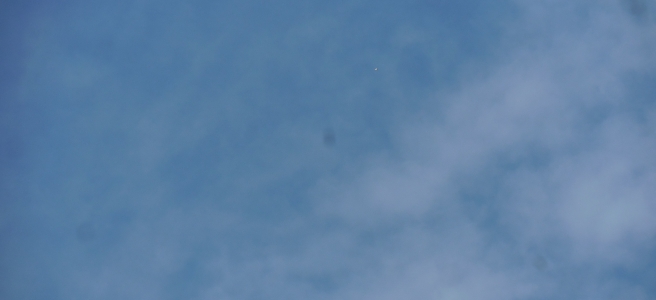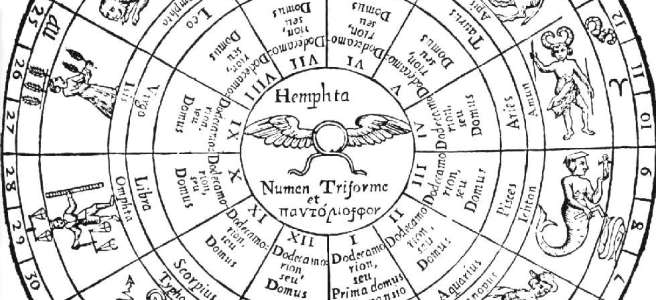Production continues slow here at the Skunkworks, due to personal reasons, the fact that the facility is still in the process of settling in to the new digs (thanks to the way the pandemic slows everything down), and, most pointedly, that, despite a lot happening in the field, very little has in fact changed or developed (more on that, below). To remedy the relative dearth of postings, here, therefore, I’ve resolved to try to post, more-or-less regularly, short takes with little commentary, less demanding to write, of what’s caught my attention the past week or so.
What strikes me first is the aforementioned present steadystate of ufology or of the phenomenon and its mytho/sociological import in general. On the one hand, I’ve speculated that the UFO as a vehicle of meaning, a sign, is as endlessly suggestive as any work of art, or even, more extremely, essentially mysterious. But, for a sign whose signifier never lands on its signified, the UFO’s significance seems little changed since the advent of flying saucers more-or-less post-1947.
Ufologically, no developments I’m aware of present data that has not been on the record since the phenomenon’s earliest days. The recent furour around the topic’s appearing in the mainstream media and its being taken seriously by the American government that has given rise to excited rumours about “Disclosure” are hardly unfamiliar to the cognoscenti with Donald Keyhoe’s oeuvre (well-thumbed) on their bookshelves. Exemplary is the second season of History’s Unidentified, which, in terms of the topics it addresses–UFOs near nuclear and military facilities, black triangles, sightings by commercial airline pilots, etc.–is as eye-rollingly dull as Elizondo & Co.’s speculations are risible, e.g., that black triangles observed flying slowly back and forth over the American back country are conducting a mapping operation, when we, with our relatively primitive technology, have been using much less obtrusive spy satellites for decades. Even the suggestion that UFOs (now UAPs), whether foreign or extraterrestrial, may pose a threat to national security is hardly new and is all-too-easily understood as an expression of America’s anxiety over its waning influence in a world that has moved on from its brief moment of monopolar power following the collapse of the Soviet Union and Communist Bloc, even if it’s more likely an unimaginative bid to inspire drama and interest in the series.
Even culturally there is little that strikes me of note. Reviews of the recent documentary The Phenomenon (for example, here and here) hardly move me to rent it, seeming as it does to be a somewhat introductory review of the well-known story pushing the “reality” of the titular phenomenon and (uncritically) its possible extraterrestrial origin. On the other hand, 2018’s The Witness of Another World at least focusses on a single, compelling close encounter case not within the border of the United States, probing more its meaning for the experiencer than seeking to uncover the material “truth” underwriting the experience. In this regard, the documentary is in line with two academic books of note, D. W. Pasulka’s American Cosmic and David Halperin’s Intimate Alien. Both develop lines of inquiry into the religious and collective psychological significance of the UFO, respectively, but neither in a way that introduces any new findings, none new to me, anyway. Pasulka’s work proposes to trace the links between religious sentiments, technology, and the UFO, but doesn’t add to or extend very far the existing literature. Likewise, Halperin develops Jung’s theses about the UFO’s expressing human, all-too-human anxieties and aspirations in a modern guise, but neither presents a reading of Jung’s views in this regard much less a grounding defense of why we should take his approach seriously, merely assuming its applicability. I have addressed these misgivings, in general and more specifically, here.
One development of especial interest here at Skunkworks has been the appearance of three ufologically-themed books of poetry (reviews forthcoming!). First is Judith Roitman’s 2018 Roswell rewardingly read in tandem with Rane Arroyo’s earlier (2010) The Roswell Poems. Though these works went under the literary radar, two more recent books have earned a higher profile. Mei-Mei Berssenbrugge’s A Treatise on Stars, framed in part by a New-Agey exploration of the imaginative implications of Star People was a finalist for 2020’s National Book Award, and Tony Trigilio’s treatment of the Hill abduction Proof Something Happened was chosen for publication by Marsh Hawk Press in 2021 by no less than the esteemed avant-garde American poet Susan Howe. UFO poetry, seriously!
The one other datum that caught my attention of late was an article from The Baffler shared by a member of the Radio Misterioso Facebook page, “Donald Trump, Trickster God”. For my part, I am unsure just how to take the author’s contention that Donald Trump is a “personification of psychic forces”, namely one of the faces of the Trickster archetype, Loki. The article’s tone, ironic and hyperbolic, suggests it’s as much a satire of the failure of the conventional wisdom to explain the rise and enduring popularity of Trump, or, at least of those who represent the failure of such wisdom (“political reporters, consultants and pundits”, “sober, prudent, smartphone-having people”) as an explanation of his demagogic power. Corey Pein, the author, marshals Jung’s explanation of Hitler’s rise to power (set forth in Jung’s essay, “Wotan”) to shore up his own analogous attempt to understand the advent of Trump. Jung famously essayed the UFO phenomenon using the same approach (and that Halperin and Eric Ouellet have since developed), a labour I find of creative if not explanatory value. On the one hand, one needn’t invoke myth, either in its inherited or newly-minted guise, to understand, e.g., the rise of Hitler: a passing acquaintance with German history and a viewing of Leni Riefenstahl’s The Triumph of the Will should suffice. Where Germany suffered a humiliating defeat, the Nazis offered the Germans pride in their culture and new military might. Where the populace had suffered terrible unemployment and want due to the postwar hyperinflation and the Great Depression, the Nazi regime gave it work and food. Where the nation had drifted aimlessly in the rudderless chaos of the Weimar republic (Germany having been one country for less than a century and having had little to no acquaintance with democratic institutions), der Führer offered it leadership and focus. Finally, the distraught and desperate Germans did not side with the international Communists but with the nationalist socialism the Nazis represented because of the atavistic sentiments the Nazis revived and cultured, and, most importantly, because the German corporate class, fearing Communism, sided with the Nazis and bankrolled them. These conditions, combined with the Nazis’ still unrivalled evil genius for propaganda, offer a more down-to-earth, compelling, and useful illumination of a very dark moment in European history. Of course, such explanations go only so far; there remains an obscure, singular residue of irrationality that resists explanation, but, if one is seeking a theory that might offer some praxis, better to take a materialist rather than a metaphysical or mythological approach. Happily, as I write this, the day after Joe Biden seems to have won this year’s election, with luck, the joke is on the Trickster…







